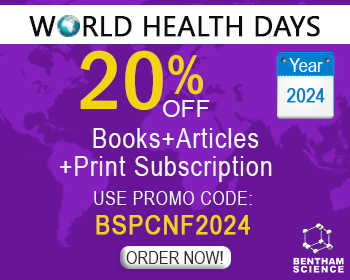Abstract
Background: In the last decade, various consortia and companies have created standardized digestion protocols and gastrointestinal simulators, such as the protocol proposed by the INFOGEST Consortium, the simulator SHIME, the simulator simgi®, the TIM, etc. Most of them claim to simulate the entire human gastrointestinal tract. However, few results have been reported on the use of these systems with potential prebiotic carbohydrates.
Methods: This critical review addresses the existing data on the analysis of prebiotic carbohydrates by different in vitro gastrointestinal simulators, the lack of parameters that could affect the results, and recommendations for their enhancement.
Results: According to the reviewed data, there is a lack of a realistic approximation of the small intestinal conditions, mainly because of the absence of hydrolytic conditions, such as the presence of small intestinal brush border carbohydrases that can affect the digestibility of different carbohydrates, including prebiotics.
Conclusion: There is a necessity to standardize and enhance the small intestine simulators to study the in vitro digestibility of carbohydrates.
Keywords: Digestibility, lactase, maltase-glucoamylase, small intestine, sucrase-isomaltase, trehalase.
[http://dx.doi.org/10.1038/nrgastro.2017.75] [PMID: 28611480]
[http://dx.doi.org/10.1021/jf503970a] [PMID: 25412115]
[http://dx.doi.org/10.1016/j.carbpol.2015.09.106] [PMID: 26572449]
[http://dx.doi.org/10.1021/acs.jafc.9b00417] [PMID: 30986057]
[http://dx.doi.org/10.1093/ajcn/nqy041] [PMID: 29757343]
[http://dx.doi.org/10.1016/j.idairyj.2011.06.002]
[http://dx.doi.org/10.3945/jn.111.155762] [PMID: 22649257]
[http://dx.doi.org/10.1021/jf402218z] [PMID: 23855738]
[http://dx.doi.org/10.1038/s41596-018-0119-1] [PMID: 30886367]
[http://dx.doi.org/10.1016/j.foodhyd.2018.08.033]
[http://dx.doi.org/10.1016/j.jff.2017.03.031]
[http://dx.doi.org/10.1021/acs.jafc.7b01809] [PMID: 28793770]
[http://dx.doi.org/10.1016/j.biortech.2019.03.053] [PMID: 30897484]
[http://dx.doi.org/10.1016/j.jff.2018.05.004]
[http://dx.doi.org/10.3390/molecules23123158] [PMID: 30513668]
[http://dx.doi.org/10.1089/jmf.2013.0092] [PMID: 24654949]
[http://dx.doi.org/10.1016/j.carbpol.2018.01.085] [PMID: 29525154]
[http://dx.doi.org/10.1016/j.foodres.2017.06.026] [PMID: 28784523]
[http://dx.doi.org/10.1016/j.jff.2015.12.002]
[http://dx.doi.org/10.1016/j.carbpol.2018.11.088] [PMID: 30600020]
[http://dx.doi.org/10.3920/BM2017.0164] [PMID: 29695182]
[http://dx.doi.org/10.1016/j.cmi.2017.03.002] [PMID: 28285978]
[http://dx.doi.org/10.1038/nrmicro3552] [PMID: 26499895]
[http://dx.doi.org/10.1007/978-3-319-16104-4]
[http://dx.doi.org/10.1016/j.jfca.2017.05.005]
[http://dx.doi.org/10.1016/j.seppur.2019.05.053]
[http://dx.doi.org/10.1101/pdb.prot4305] [PMID: 22485681]
[http://dx.doi.org/10.3389/fnut.2019.00061] [PMID: 31134206]
[http://dx.doi.org/10.1021/acs.jafc.7b03678] [PMID: 28914528]
[http://dx.doi.org/10.3390/nu8020078] [PMID: 26861391]
[http://dx.doi.org/10.1016/j.jnutbio.2013.05.001] [PMID: 23849454]
[http://dx.doi.org/10.1039/C8FO02534G] [PMID: 30950465]
[http://dx.doi.org/10.3390/microorganisms7050122] [PMID: 31060344]
[http://dx.doi.org/10.1371/journal.pone.0191025] [PMID: 29370193]
[http://dx.doi.org/10.1039/C6FO00073H] [PMID: 26943361]
[http://dx.doi.org/10.1016/j.jff.2015.02.026]
[http://dx.doi.org/10.1021/acs.jafc.7b04842] [PMID: 29236499]
[http://dx.doi.org/10.1007/s00394-003-0397-3] [PMID: 12594539]
[http://dx.doi.org/10.1111/1541-4337.12351]
[http://dx.doi.org/10.1016/j.bcp.2017.03.012] [PMID: 28322745]
[http://dx.doi.org/10.1038/s41598-018-23198-5] [PMID: 29549283]
[http://dx.doi.org/10.1038/ismej.2011.212] [PMID: 22258098]


























